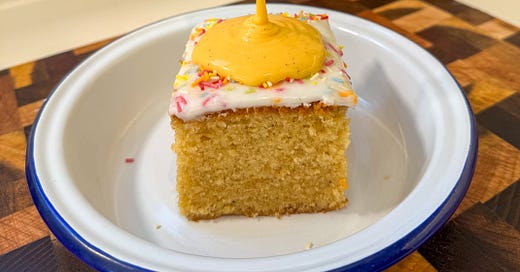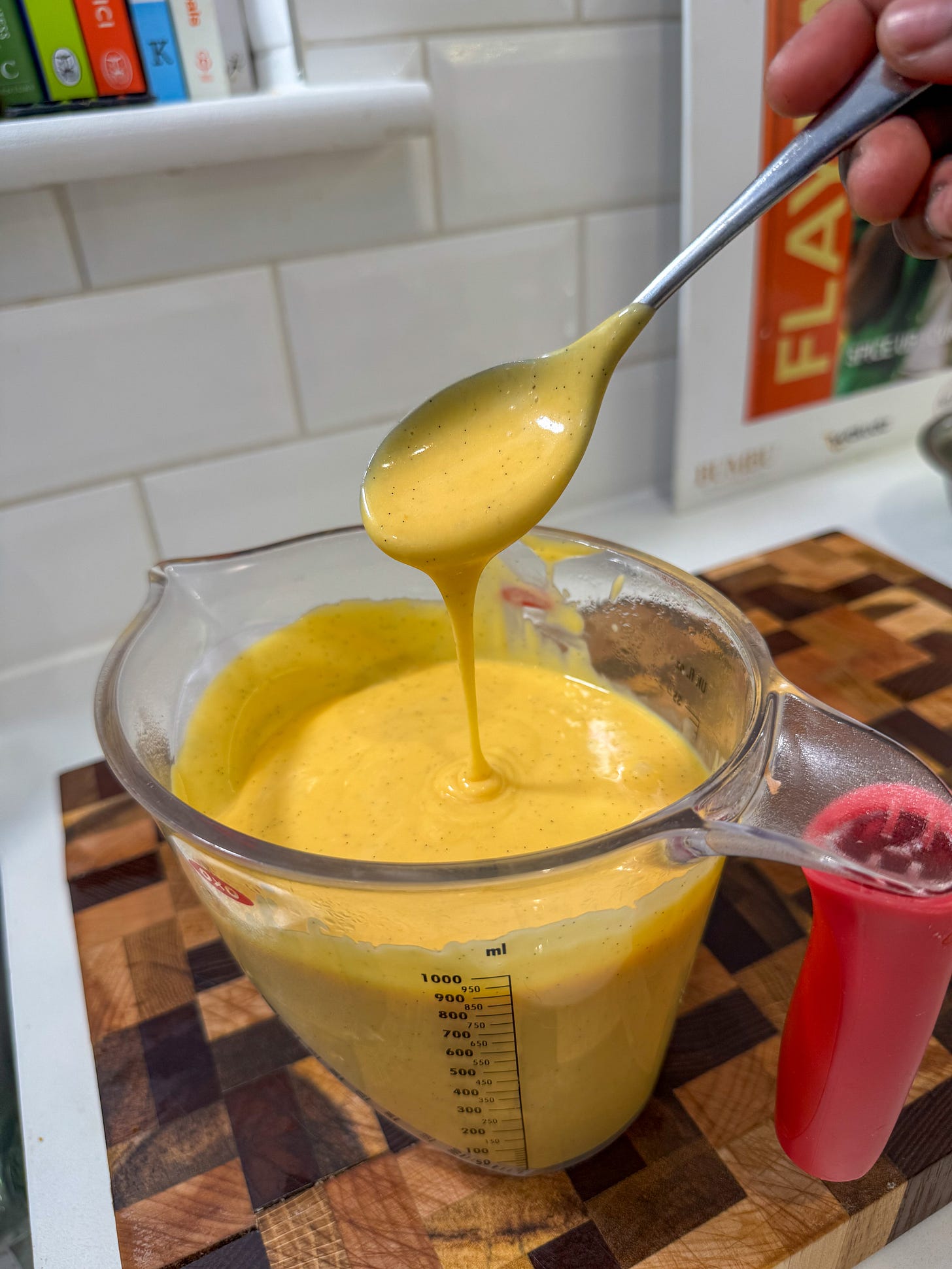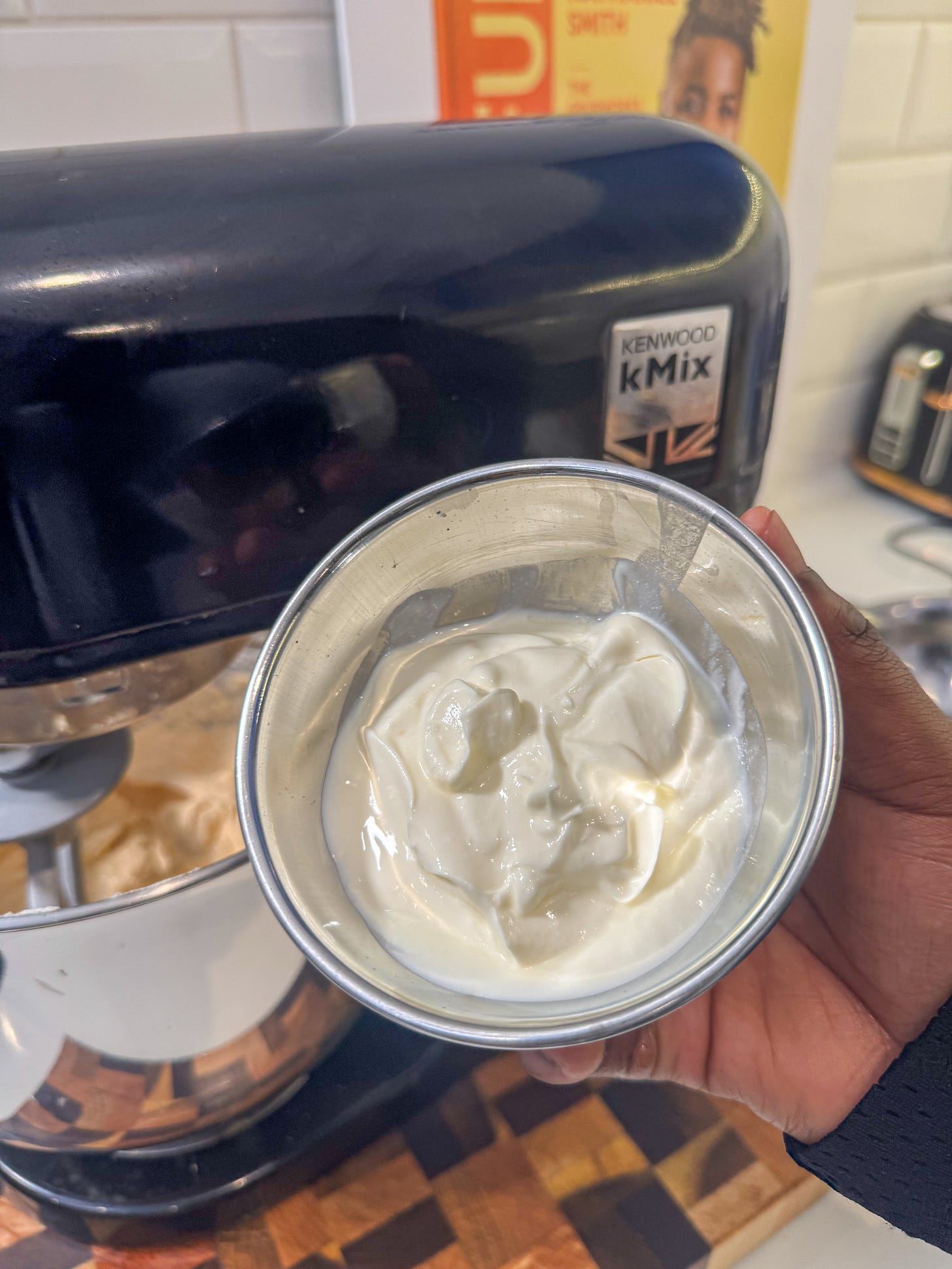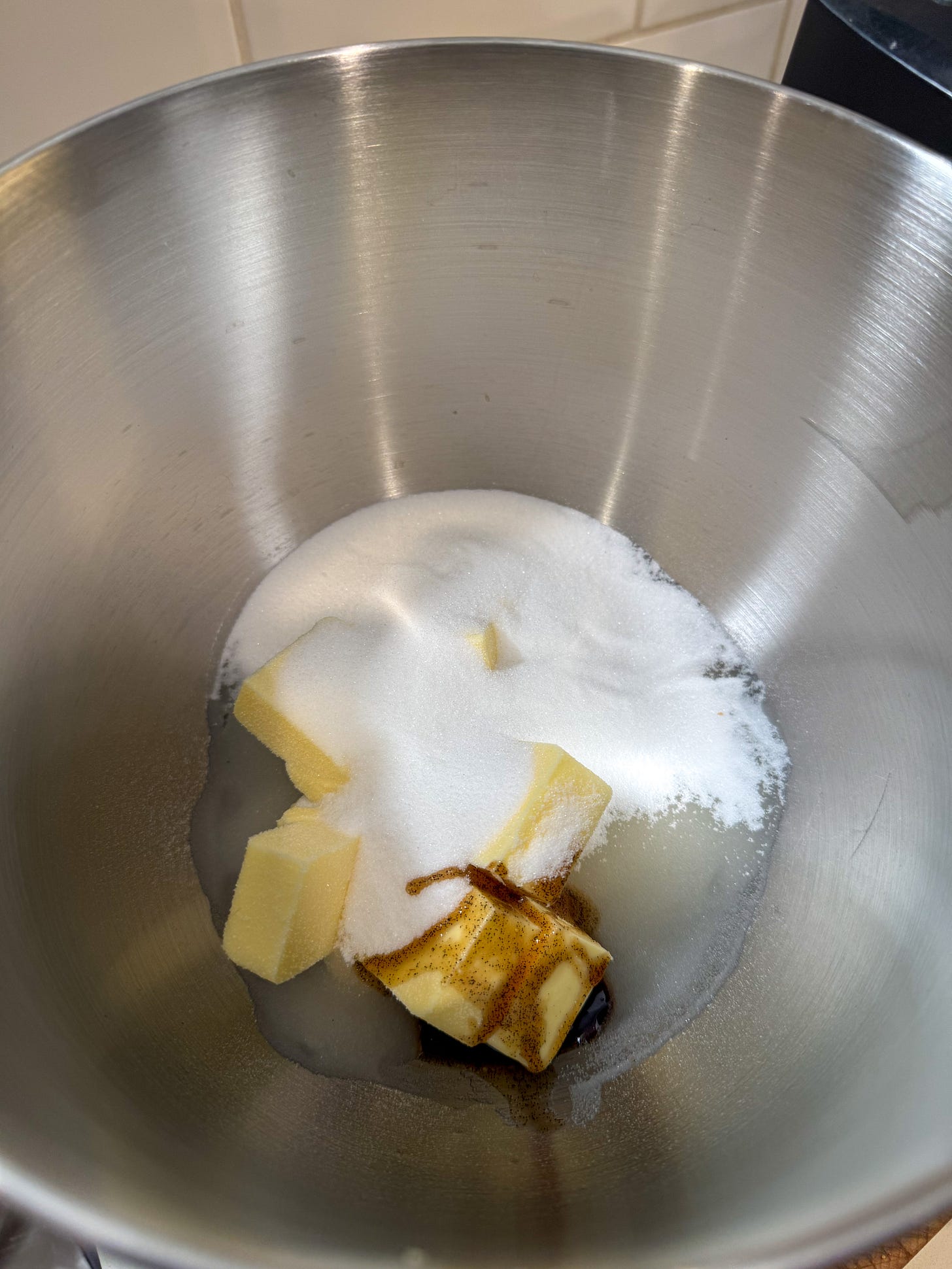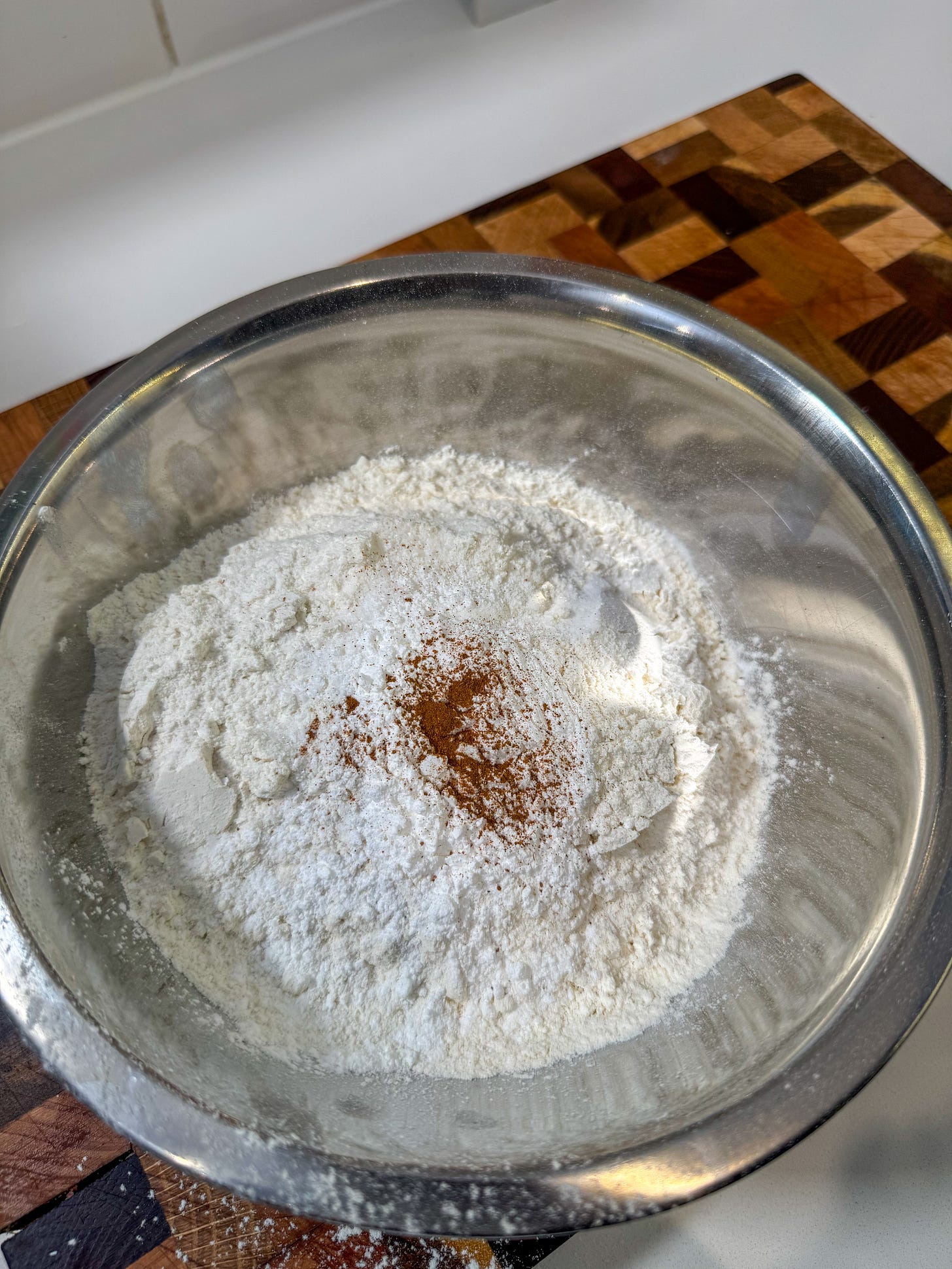Welcome back to Unfiltered Flavours+! Issue #25 Oh it feels SO good to be back. This week we’re throwing it back to one of the most nostalgic British school dinner desserts… sprinkle cake n custard!
Oi, you see this dessert? It had everyone in a chokehold during secondary school. There’s just something so wonderful about a simple cake n custard. In the uk during lockdown, this cake single had people breaking quarantine to go buy a tray.
Today I’m going to go into a little more detail about how and why I do what I do when it comes to cake. The custard is pretty basic and it was covered in my apple crumble cake with brown sugar custard recipe here. The only difference is I swapped brown sugar for regular sugar this time round.
Lastly, I do have a bit of a sweet tooth that’s slowly decreasing however if you really don’t like sweet things I’d reduce the amount of sugar in this recipe. You can use around 25-50g less sugar or you can simply drizzle the icing over instead of creating an even layer. Sweetness is subjective, just like spice. To me this isn’t painfully sweet, but I’m sure if I gave this to my nana who doesn’t even take sugar in her tea, this would be too sweet for her
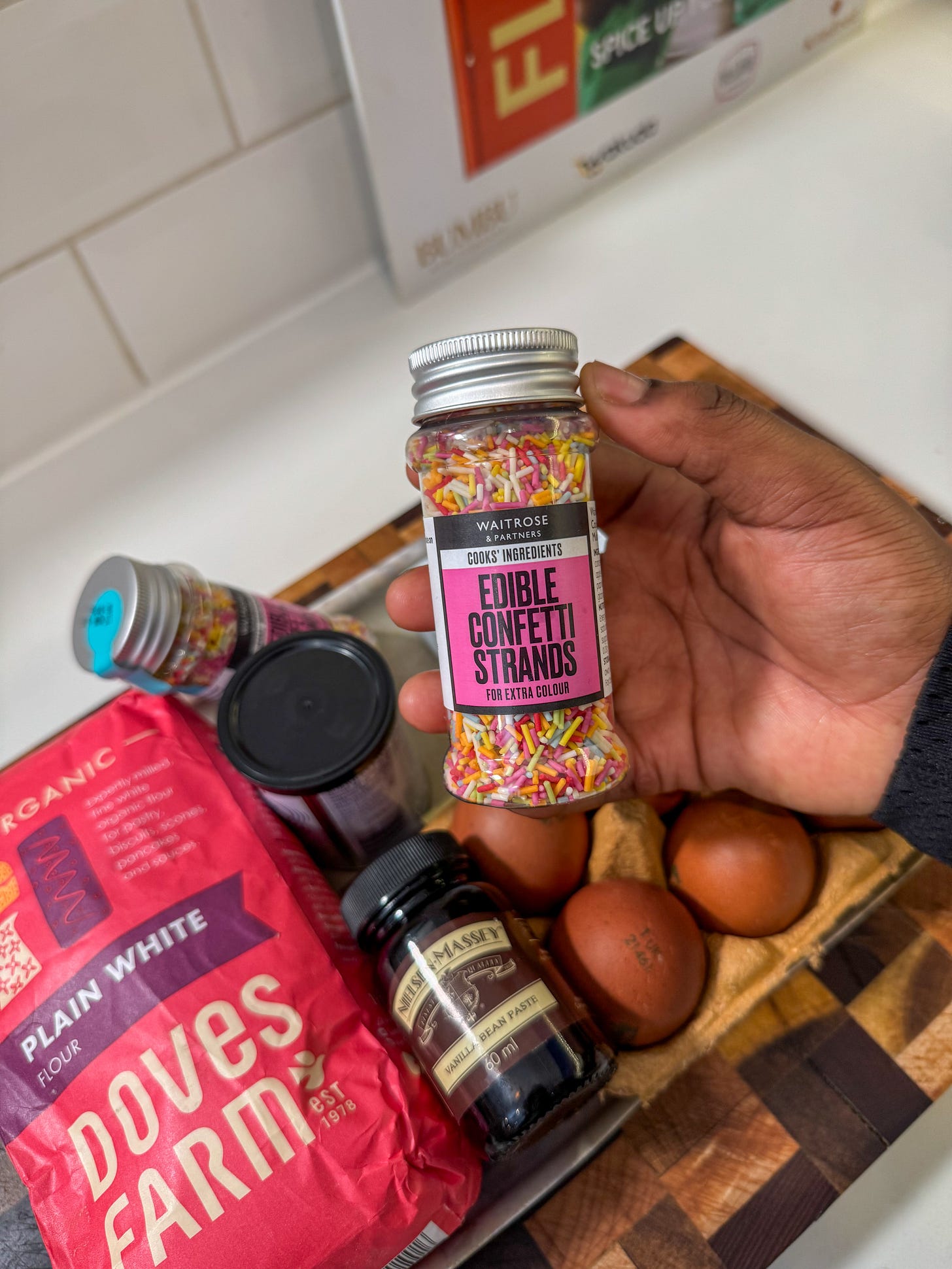
Flavours & Technique
This dessert really is simple, but there’s a few things you can do to elevate it. That starts with the sponge! You don’t want a dry sponge with little to no moisture. At the same time you don’t want an overly dense moist cake, especially when it’s a plain cake.
Growing up in a Jamaican household means that when it comes to cake, you have to season that too. A cake like this, needs a few spices to balances out the sweetness. You want little notes here and there for your tastebuds to cling on to. Thats why I like using just a teeny tiny bit of nutmeg and and cinnamon.
I use sour cream for most my sponge cakes if they’re plain. For example, for my apple crumble cake recipe I don’t use sour cream. That’s because the apples provide added moisture in this cake that seeps into the sponge. With a plain cake that has nothing else involved a little bit of sour cream goes a long way.
There’s others steps you can take to ensure your cake is lovely and that’s these things:
Fats:
I like to use butter and oil. Butter adds a wonderful flavour whilst oil keeps the cake moist and with the right measurements this results in a soft, moist tender crumb.
Flour:
I really don’t think there’s any need for specialist flours like cake flour. If you use the correct amount of plain flour you’ll be just fine. The key with cakes is to ensure that you mix all your dry ingredients together, before adding them to your eggs and fats.
Mixing:
Beat the sugars and fats together and I don’t mean until it’s just mixed. You want to do this for at least a few minutes. The mixture should be pale! By doing this step, you incorporate a good amount of air into the mixture, which results in a really good rise.


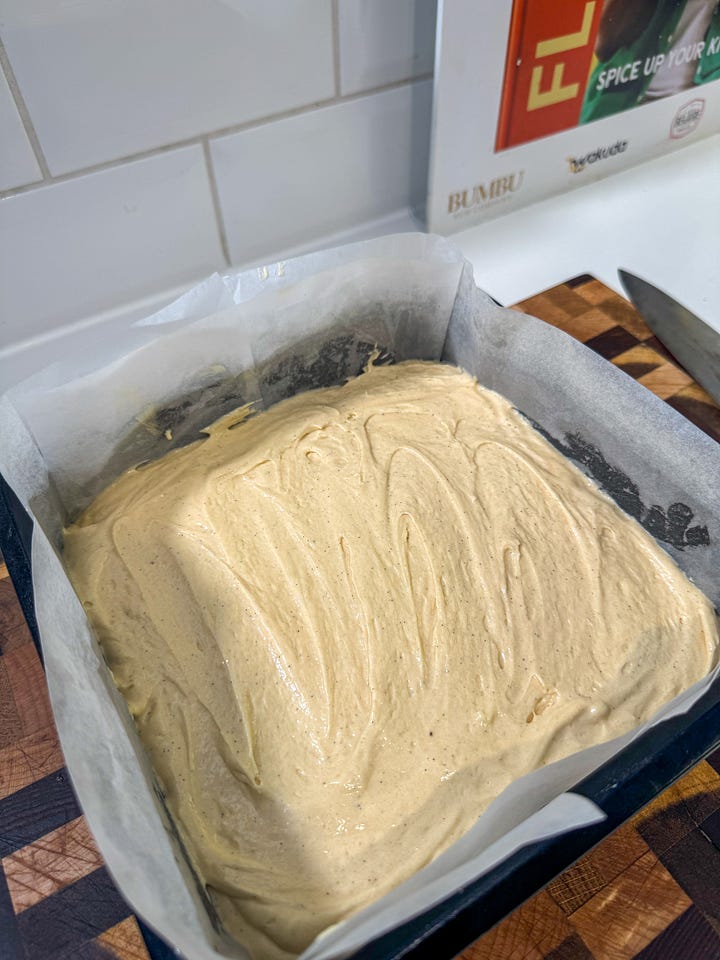

At same time, there’s such thing a thing as over mixing and you really really don’t want to over mix once you’ve added the flour. Flour contains gluten and the more you work the gluten the tougher your cake will be. We’re making cake, not bread! So once the flour is added, mix until it is just about incorporated.
Temperature:
Baking your cakes at a lower temperature of 160°c (fan) ensures that your cake doesn’t brown too much. This also means that the edges won’t be dry.
Most people don’t know that their home oven is usually over by 10-20°c. I really recommend getting an oven thermometer so you can accurately check what the temperature of your oven is. A lot of people sometimes say that a recipe takes long for them or that whatever they’re baking has browned too much, whilst being undercooked in the middle. Those issues are usually related to an uncalibrated oven. Even my oven runs a little hot!
The temperature of your ingredients are also important, when a recipe calls for room temperature butter it needs to be room temperature and easy to squash. Room temperature eggs, room temperature sour cream. When some of these ingredients are cold, they fail to break down evenly.
Over baking:
Now the actual perfect temperature to pull your cake out of the oven is 98°c ish. If you were to use the toothpick method, you’d want a few crumbs to cling onto the toothpick. The cake will still continue to cook once it’s removed from the oven, so you want to ensure you plan for that.
Ingredients & Methods
Sprinkle cake:
200g unsalted butter, softened room temperature

